Well before summer hits its often-humid stride, three enchanting spring phlox species offer months of flowers, from the beginning of that budding season through early summer. Woodland phlox, creeping phlox, and moss phlox are distinct spring phlox species that offer bursts of color in tricky places. They precede (by months) the more stately garden phlox—tall and showy in late summer and early fall, but often prone to mildew in muggy climates.
Here’s how to grow spring phlox and how to tell the difference between the three species.
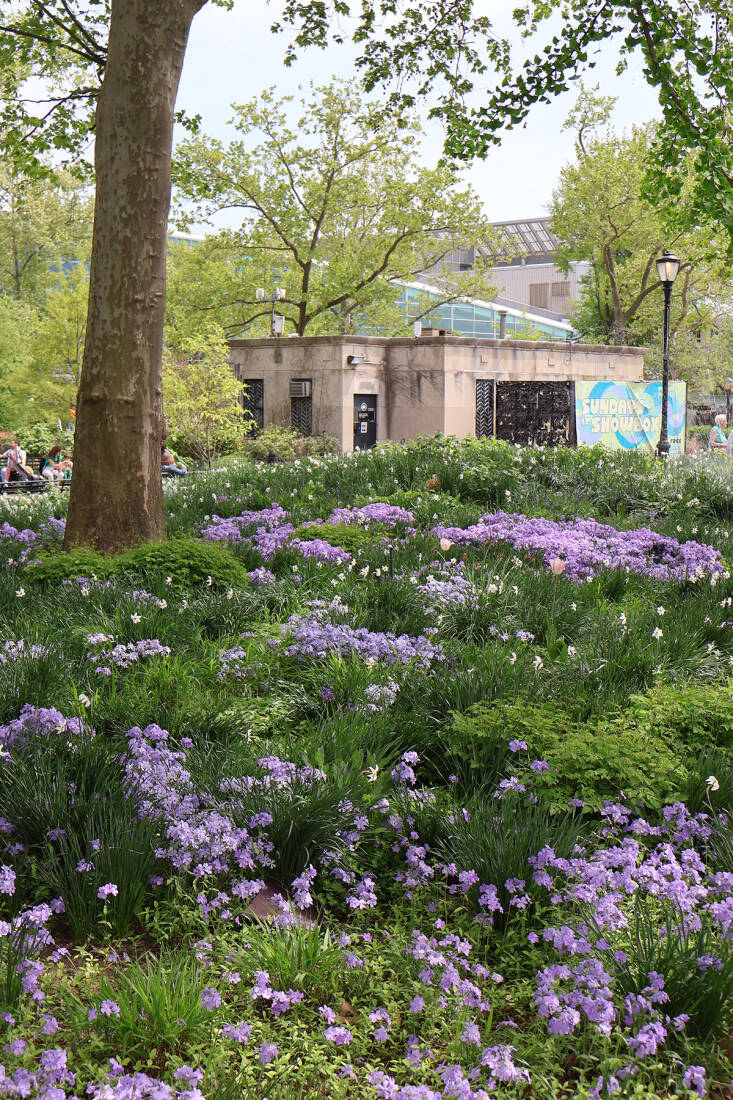
These three spring phlox are all North American natives, and because they are perennial, and their habit is to spread, they are a one-time investment that pays in aesthetic enchantment and pollinator satisfaction.
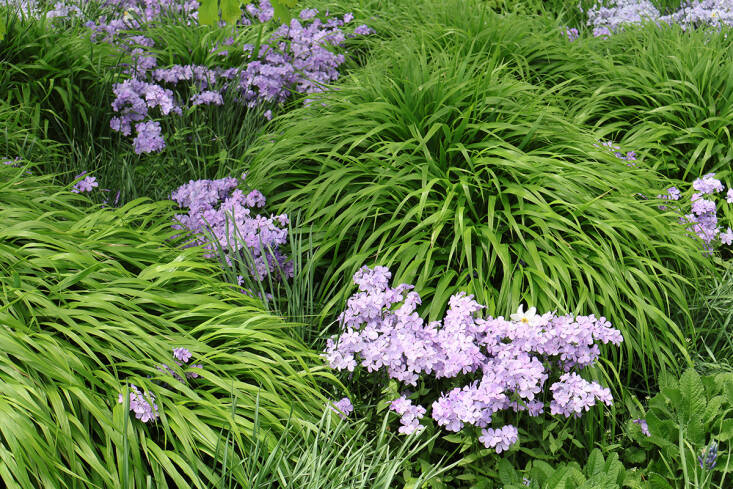
Woodland phlox (Phlox divaricata) belong in garden spaces where high, bright shade is the spring norm. Think beneath deciduous trees, whose leafing-out allows plenty of time in dappled sunlight. Their flowering stems are up to about 14 inches high, and different cultivars’ flowers are white, pink, lilac, or intense cerulean.
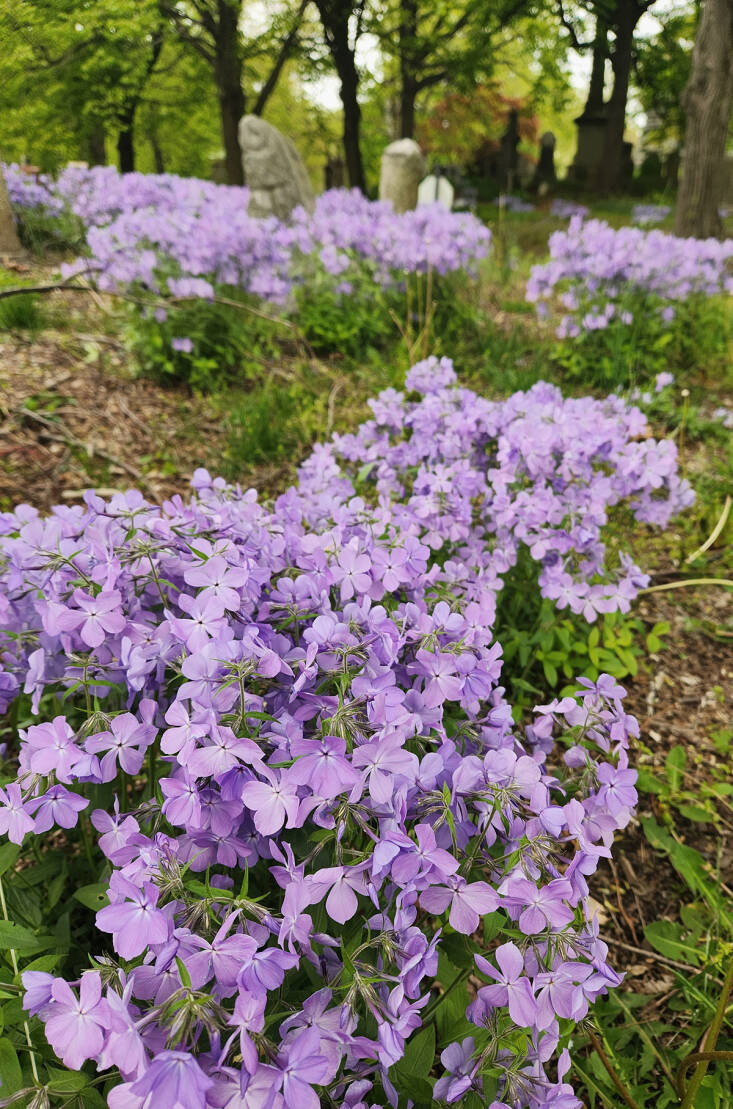
Clumps of fragrant woodland phlox can be spectacular, interspersed between perennials that will fill out as the seasons advance. Astilbe, hardy begonias, and Japanese ribbon grass, are good (but non-native) companions. For native options, consider lady ferns, wood ferns, northern sea oats, woodland asters, and shade-tolerant blue-stemmed goldenrod.
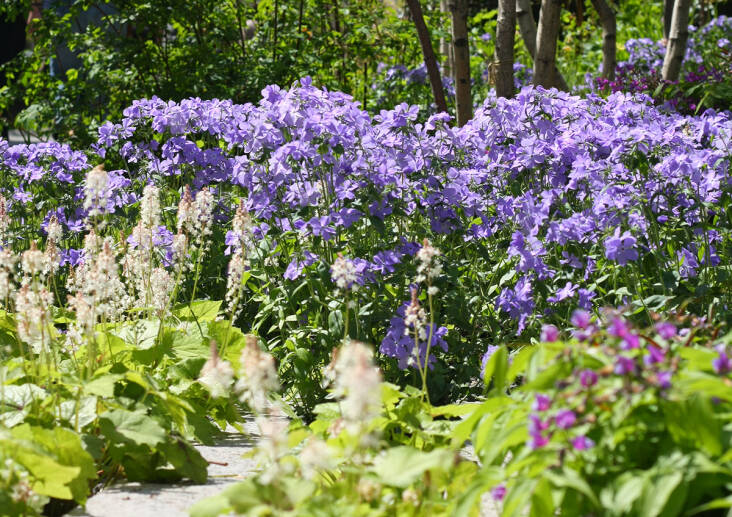
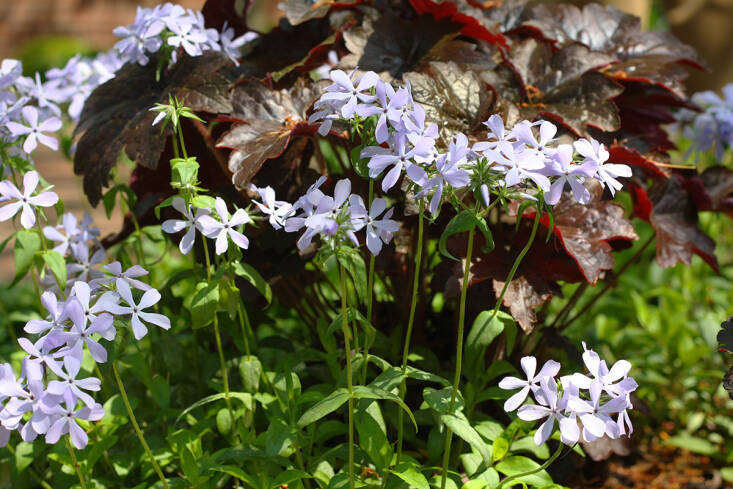
The common name creeping phlox usually refers to Phlox stolonifera (they spread via stolons, horizontal above-ground stems, forming colonies), but some sources will attribute creeping phlox to moss phlox (see our third phlox species, below). Regardless, creeping phlox are considered native to woodlands and shaded river banks in the Appalachian states.
Creeping phloxes’ flowering stems are around six to 12 inches tall, and their habit is to spread. They are an effective mid to late spring groundcover, more like an impressionist carpet than a tapestry of bold splashes. This species will also thrive in direct sunlight, especially morning sun, if the soil does not dry out.
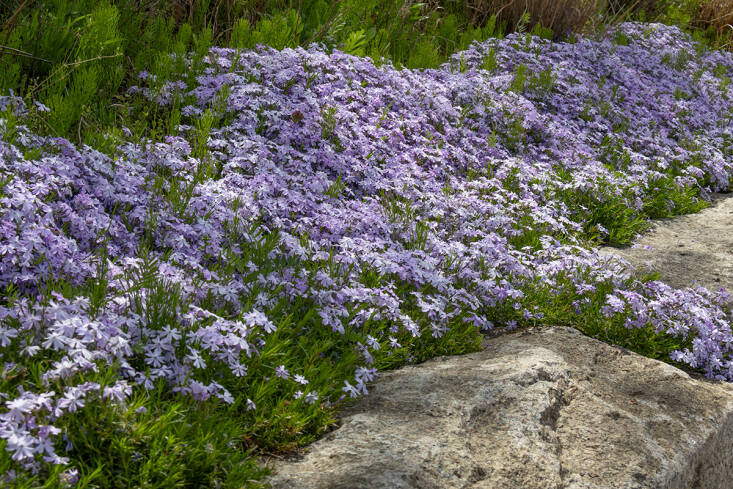
In full sun, moss phlox, Phlox subulata*, grows like a plush carpet, clinging to and spilling over rock walls, cushioning paths, and insinuating itself between pavers. Its flowers are flush with the low, needle-shaped leaves, making the plants in bloom look like a floral throw draped over a landscape that needs softening. Of the three spring phlox species, moss phlox are the earliest to bloom. They require full sun for optimal flowering.
Two other similar, mat-forming phlox species are P. nivalis (trailing phlox) and P. bifida (sand phlox).
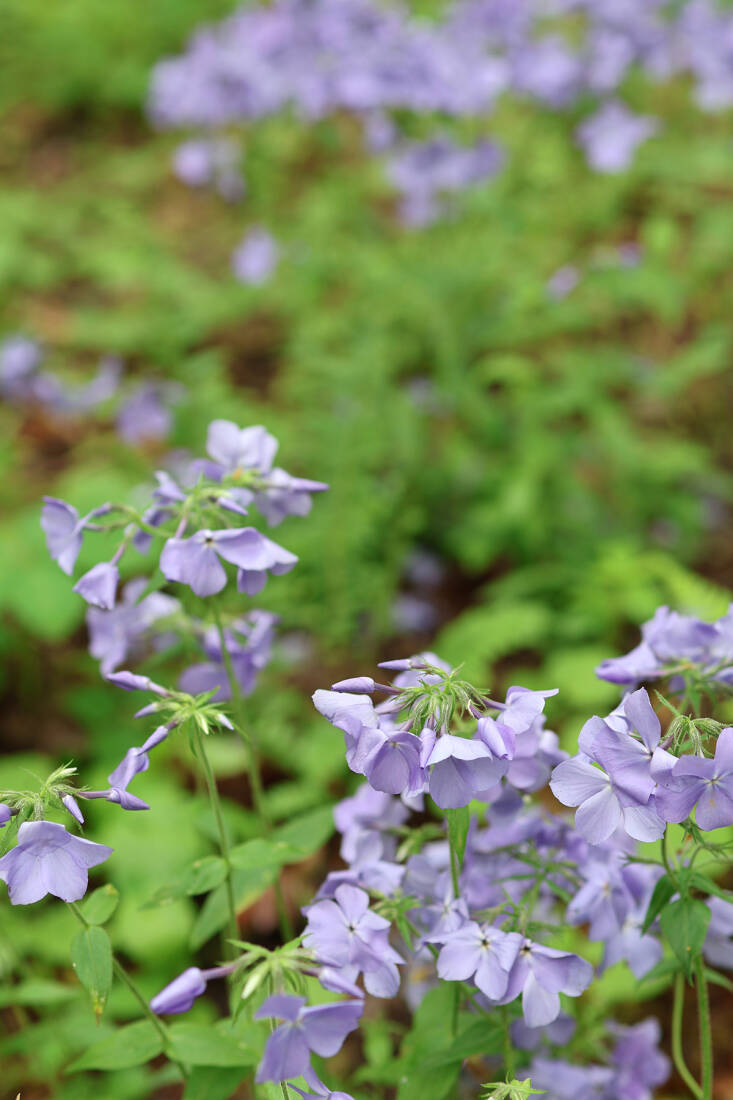
Keep it Alive:
- All three spring phlox are hardy from zones 3 to 8, and possibly 9.
- Woodland phlox prefer high shade, dappled shade and are intolerant of drought.
- Woodland and creeping phlox prefer consistently moist but well-drained soil (never soggy feet).
- Creeping phlox grows well in semi-shade, dappled shade or morning sun.
- Moss phlox grows and flowers best in full sun and will tolerate very poor soil.
Cheat Sheet:
- Woodland phlox are 10 to 14 inches high and bloom in late spring.
- Creeping phlox grow to about eight inches tall and flower in early spring
- Moss phlox (sometimes called creeping) is mat-flat and blooms in early spring
- Adding these native wildflowers to your garden scheme gives you a check mark for the pollinator-support box.
See also:
- Epimedium 101: Everything You Need to Know About the Shade-Tolerant Groundcover
- Queen of Shade: Susanna Grant’s 7 Tips for Gardening in Tight, Dark Spaces
- Steal This Look: Shady Secrets of an Expert Gardener


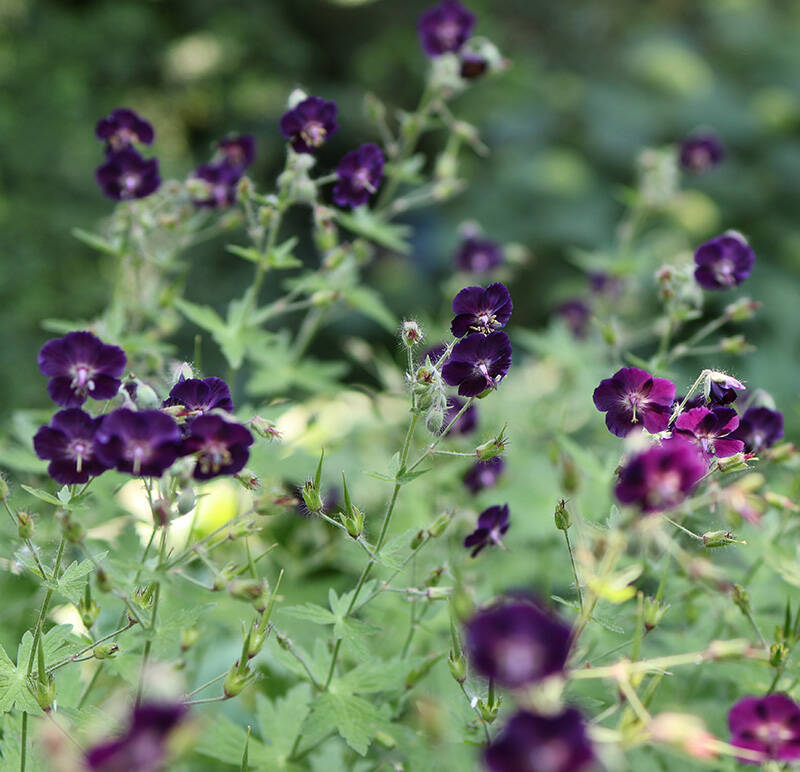









Have a Question or Comment About This Post?
Join the conversation (0)